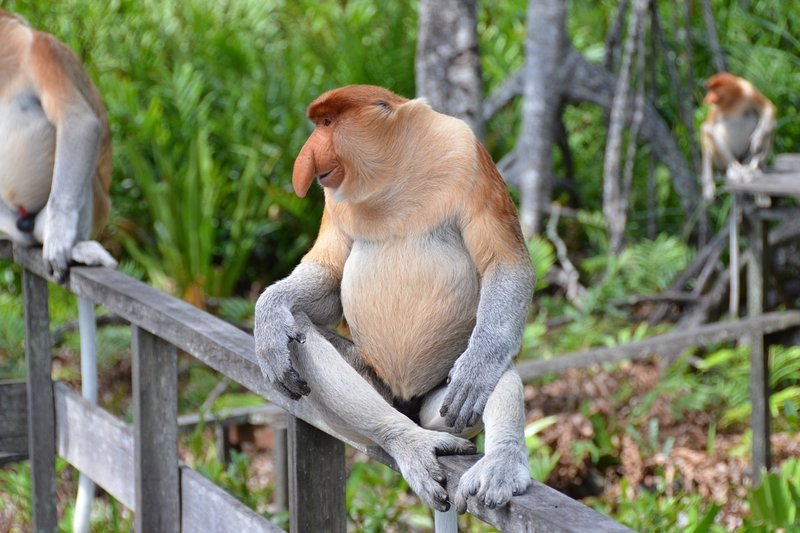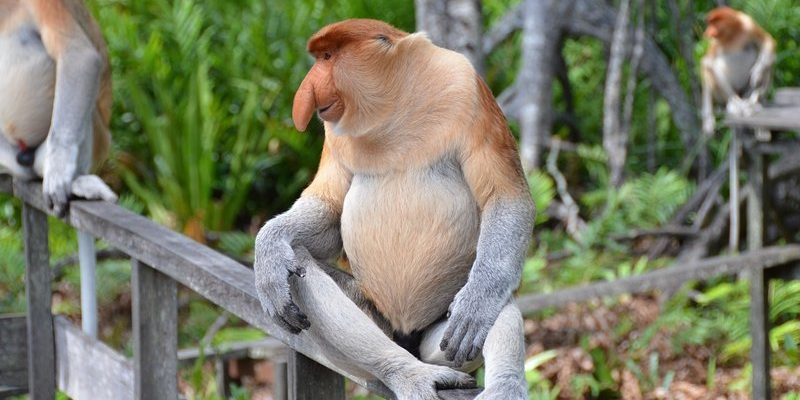
Seeing a Proboscis monkey in the wild can feel like a scene from a nature documentary. These monkeys are not only unique in appearance but also in behavior. They live in social groups and are known for their loud calls and acrobatics in trees. But approaching or interacting with wild animals can be tricky. It’s important to know how to act safely and respectfully around them. Here’s a breakdown of what to do if you encounter a Proboscis monkey in its natural habitat.
Understanding the Proboscis Monkey
Proboscis monkeys are fascinating creatures found primarily in Malaysia and Indonesia. Their most notable feature is their large, hanging nose, which can be quite a sight to see up close. This monkey is often associated with its unique social structures, living in groups led by a dominant male. These monkeys tend to stick near rivers and swamps, making them somewhat easy to spot if you’re in their territory.
You might find yourself wondering why their noses are so large. Well, it’s both for attraction and communication! The larger the nose, the more appealing the male is to females. When it comes to their behavior, you’ll often see them lounging in trees, munching on leaves, or leaping effortlessly from branch to branch. They have an amusing way of moving, almost like they’re showing off their skills.
Stay Calm and Observant
The first thing to remember if you see a Proboscis monkey is to stay calm. Panicking won’t help anyone. Instead, observe from a distance. These monkeys can be curious creatures, but they are also wild animals that may feel threatened if you get too close.
Keep your voice low and avoid sudden movements. Think of it like watching a movie—you don’t want to interrupt the scene. If you’re in a group, make sure everyone understands the importance of being quiet and respectful. The last thing you want is to scare the monkeys away or, worse, provoke them.
If the monkeys seem curious about you, that’s okay! They might come closer, but still, maintain your distance. Watching their behavior can give you insight into their social structure and daily life, which is a thrilling experience.
Respect Their Space
Wild animals have their own territories, and you should respect that. If you encounter a Proboscis monkey, it’s crucial to give them space. Getting too close can stress them out. Just like you wouldn’t want someone invading your personal space, these monkeys also appreciate their boundaries.
If you’re observing a group, try not to block their paths or make it difficult for them to move. If you happen to be near a troop and they seem agitated, back away slowly. Making loud noises or sudden movements can startle them. A calm retreat allows them to go about their business undisturbed.
Respecting their space not only keeps you safe but also helps preserve their natural behaviors. The more we observe without interfering, the better we understand their lives in the wild.
Photography Tips for Capturing Moments
For those who love photography, spotting a Proboscis monkey can feel like winning the jackpot. However, snapping the perfect shot requires some consideration. First, make sure to use a telephoto lens. This allows you to capture stunning images without getting too close.
Avoid using flash photography. The bright light can scare or confuse the monkeys, causing them to flee. Instead, try to shoot during the golden hours—early morning or late afternoon—for that perfect, soft lighting.
Lastly, be patient. Wildlife photography is often about waiting for the right moment. Observe the monkeys’ behaviors and patterns; you might catch them playing or grooming each other. Those candid moments can create beautiful photos that tell a story about their lives.
Be Mindful of Local Guidelines
When exploring areas where Proboscis monkeys live, it’s essential to follow local guidelines and regulations. Many national parks and reserves have specific rules to protect wildlife and their habitats. These may include staying on designated paths, avoiding feeding the animals, or even guidelines on photography.
Being mindful of these rules isn’t just about following the law; it’s also about preserving the environment for future visitors and the animals that call it home. If you’re unsure about any regulations, don’t hesitate to ask a park ranger or guide. They can provide valuable insights and ensure you have a safe and enjoyable experience.
Following these guidelines shows respect for nature and the efforts to maintain these beautiful ecosystems. After all, we’re all visitors in their world.
What to Do in Case of Aggression
While Proboscis monkeys are generally not aggressive, it’s important to know what to do if a monkey feels threatened or aggressive. The key is to remain calm. Do not make direct eye contact, as this can be seen as a challenge.
If a monkey approaches you aggressively, try to stand still and avoid sudden movements. Do not try to feed or touch them. Instead, slowly back away while keeping your eyes on the animal. This strategy allows you to maintain a safe distance without further provoking the monkey.
If a monkey starts to scream or display aggressive behavior, it’s wise to leave the area and look for a safe spot, like a nearby building or vehicle.
Encouraging Conservation
Encountering a Proboscis monkey in the wild can be a fantastic opportunity to reflect on the importance of conservation. Sadly, these fascinating creatures are threatened by habitat loss and illegal hunting. By educating yourself and others about their plight, you can play a role in protecting them.
Consider supporting organizations that focus on wildlife conservation or even volunteering for local projects. Every little bit helps, and spreading awareness can inspire others to do their part too.
You might be wondering how you can make a difference. Start by sharing your experiences. Tell stories about your encounter with Proboscis monkeys to raise awareness about their natural habitats. Every conversation can spark interest in conservation efforts.
In conclusion, encountering a Proboscis monkey in the wild can be an unforgettable experience. By staying calm, respecting their space, and following local guidelines, you can enjoy observing these unique primates while also ensuring their safety. Being mindful of conservation can help protect these incredible creatures for future generations. So, the next time you find yourself in their territory, remember these tips and enjoy the adventure!

